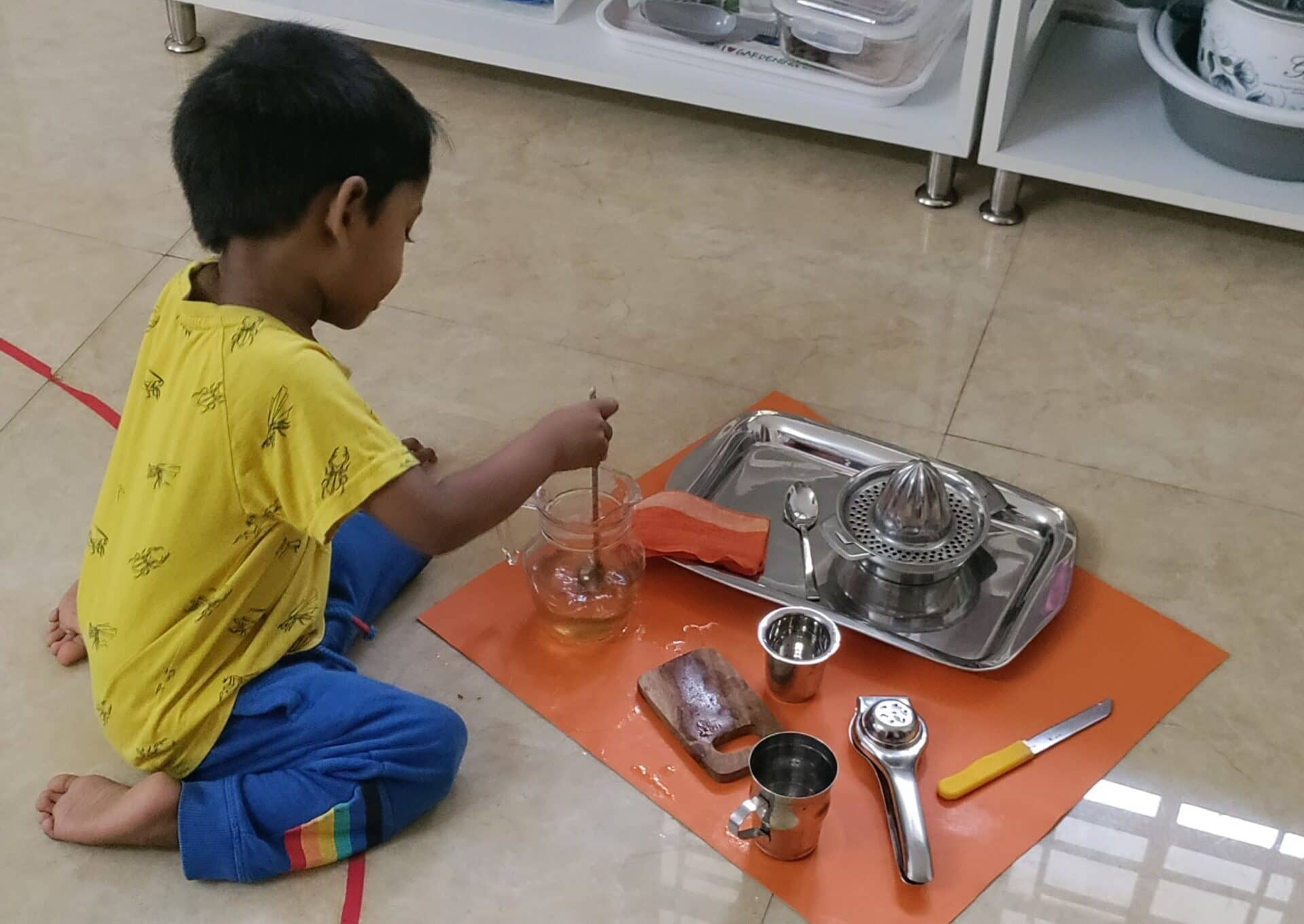Toilet Learning is a significant milestone in a toddler’s journey toward independence. In our Montessori toddler program, we approach toilet learning with deep respect for each child’s natural development, emotional well-being, and need for autonomy.
The Casa Classrooms
Specially designed learning materials are displayed on open shelves, easily accessible to the children. Classrooms also include low sinks, child-sized furniture, cozy spaces for quiet reading, reachable shelves with work available for free choice, and child-sized kitchen utensils so children can eat, prepare, and clean up their snacks on their own.















